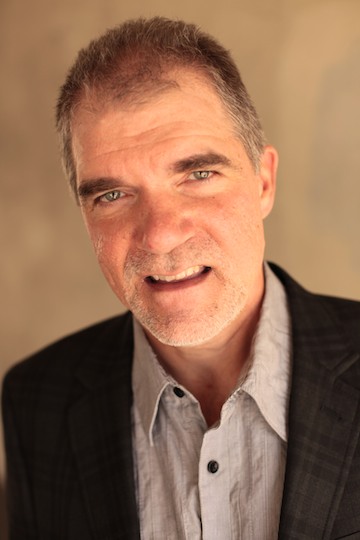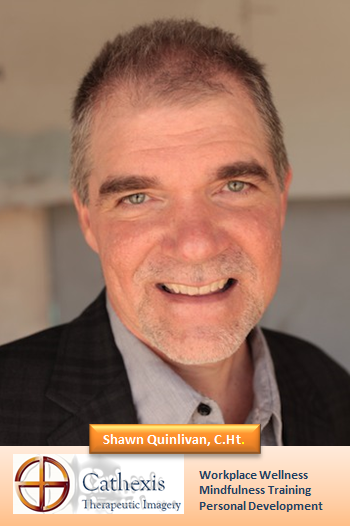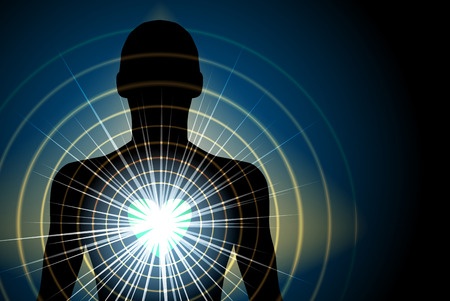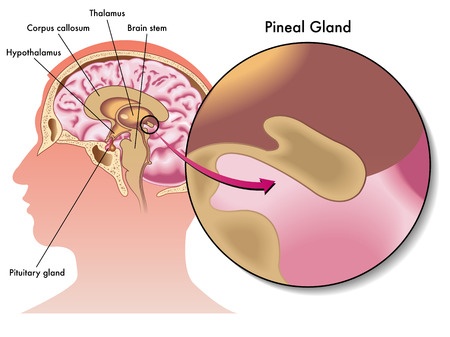
A WINTER SOLSTICE MEDITATION
(Note: The following article is from a presentation on MIndfulness Meditation given during the Winter Solstice service at Emerson Unitarian Universalist Church in Canoga Park, California, on December 20, 2015.)
In this article and accompanying meditation (see the link below), we celebrate Winter Solstice in a very special way, as we join in mind, body & spirit to invite reborn light into the fertile depths of our individual and collective souls. We shall contemplate and explore the seeded darkness of our inner being; the transcendent mystery of midwinter and its promise of renewal wrought by the pale sun and cold earth; the ancient, echoed wisdom woven by countless seasons into bone and sinew and sense. We shall partake in the interconnected sentience of our living, breathing and enigmatically conscious universe. At this revered confluence of endings and beginnings, this holiest of all seasons beneath the turning of the Celestial Wheel, let us rejoice in ambient communion with the resplendent wonder of the sun’s rebirth in our hearts, and create a cradle of spirituality from which to draw inspiration.
Mindfulness
My practice includes teaching both private and corporate clients mindfulness meditation. There have been thousands of studies conducted by hundreds of independent researchers demonstrating the benefits of mindfulness meditation in reducing stress, managing emotional reactivity, improving focus and concentration, strengthening immune system function, and treating an array of medical and mental health related conditions. It is being widely used in business to facilitate healthy and productive environments and positive workplace culture. There are still skeptics, however, many of whom assign a degree “woo-woo” to the practice of meditation. Having meditated daily for nearly 40 years, I can tell you first hand that whatever woo-woo that occurs is not in the meditation itself, but rather in the experience of higher conscious. We shall consider this phenomenon in relationship to Winter Solstice a bit further, both conceptually and experientially.
I invite you to take a deep breath. Match your inhale to your exhale. Now repeat this deep, measured breathing and focus your attention on it. Notice the air moving. Touch your thumbs and fingertips together; wiggle your toes. Observe yourself in relation to the space around you. Just be present with yourself . . . in this moment. Let go of all resistance, expectation and judgment. Simply allow yourself to experience the here and now.
“Still yourself. Listen. Breathe.”
This is what is known as a mindfulness moment. The Zen of mindfulness, the bone and sinew of it, the essence of being truly present, is momentarily absolving oneself of intentional thought. And the most effective way to learn the art of mindfulness is through mindfulness meditation, which is a western, non-sectarian, research-based form of meditation derived from the ancient Buddhist practice known as Insight Meditation.
 Mindfulness meditation develops the skill of paying attention to our internal and external experiences with acceptance, patience, and compassion. The idea of enlightenment, of shifting and expanding perception beyond the realm of human intelligence, is grounded in this subtle and remarkable discipline of inviting a pure awareness that diffuses the habituation of fearful thoughts, emotions and behaviors. In mindfulness meditation, one of the oldest and most venerated practices for exploring the ineffable dimensions of consciousness, the seeded darkness of our inner being, has come of age.
Mindfulness meditation develops the skill of paying attention to our internal and external experiences with acceptance, patience, and compassion. The idea of enlightenment, of shifting and expanding perception beyond the realm of human intelligence, is grounded in this subtle and remarkable discipline of inviting a pure awareness that diffuses the habituation of fearful thoughts, emotions and behaviors. In mindfulness meditation, one of the oldest and most venerated practices for exploring the ineffable dimensions of consciousness, the seeded darkness of our inner being, has come of age.
Unity Consciousness
But let’s set aside ancient wisdom for a moment. Instead, let’s use modern science to embrace this old world perspective of the interconnected sentience of our living, breathing and enigmatically conscious universe. I quote Neil deGrasse Tyson, popular astrophysicist and director of the Hayden Planetarium at the Rose Center for Earth and Space:
“The atoms of our bodies are traceable to stars that manufactured them in their cores and exploded these enriched ingredients across our galaxy, billions of years ago. For this reason, we are biologically connected to every other living thing in the world. We are chemically connected to all molecules on Earth. And we are atomically connected to all atoms in the universe.”
According to quantum physics theory, beneath molecules, atoms, subatomic particles, and quarks lies a singular unified field of energy, an intelligence from which all forces and particles emerge, a ‘conscious’ structural matrix that exists everywhere in the universe. This energy field is considered ‘conscious’ or ‘intelligent’ because it encompasses the basic behavior of all things within the functioning laws of nature. The scientific community calls this concept unified field theory, or unity consciousness. In his book, A Brief History of Time, Stephan Hawking refers to the phenomenon of unity consciousness as “the mind of God.”
This consciousness, or organic sentience, is foundationally influenced by the interconnection of the Sun and Earth, a transmission of galactic energy communicated through light and vibrational wave frequencies along the infinite electromagnetic spectrum (radio, microwave, infrared, visual, ultraviolet, x-ray, and gamma rays); much of which we cannot see or feel.
In his book, ‘The Social Conquest of Earth,’ pre-eminent Harvard biologist and two-time Pulitzer Prize winner E.O. Wilson sets forth a stunningly vivid and succinct description of the limited aperture through which human biology allows us to perceive our world.

The migration patterns of birds are a primary example of the ability of animals to sense electromagnetic fields
What is most fascinating and relevant about this account is not that technology can reveal realities to which we are insensate—colors we don’t see, sounds we don’t hear, energy fields we don’t sense—what is most compelling is that all of these are perceivable to biology, just not human biology. It is established biological fact that animals see colors we can’t see; hear sounds we can’t hear; feel vibrations we can’t feel; and sense electromagnetic fields.
All living things are comprised of energy that radiates an aura, a “bio-electromagnetic field,” which results from electrical impulses generated by the movement of electrons around the nucleus of our cells. The human aura includes physical, emotional, and mental/spiritual aspects, and represents this chemical, biological, and atomical connection to the living universe. Research utilizing infrared and Kirlian photography has demonstrated that meditation intensifies or “charges” this aura, which enhances its interactivity with the geomagnetic energy fields of the earth and the cosmos.
From this scientific perspective then, is it such a leap to conceive of creation’s wonder, the transcendent mystery, perhaps even divinity itself, as this conscious matrix of unified energy that surrounds and connects all living things? And is this conception not distinctly akin to what Unitarian Universalism calls “the Interconnected Web of Life?”
Winter Solstice
Winter solstice is the time to honor the transcendent mystery—the wonder of the seeded darkness and the beauty of light reborn. Celebrations of longer days to come and the turning of nature’s seasonal wheel have been common throughout cultures and history. Winter solstice is the promise of patient wisdom beneath the turning stars, a time to embrace the rebirth of the sun with great hope and compassion in our hearts.
Pagan author T. Thorn Coyle wrote that the solstice is:
” . . . a chance to still ourselves inside, to behold the glory of the cosmos, and to take a breath with the Sacred.”
For many people, the Winter Solstice season marks the only occasion all year they set foot in a house of worship. Indeed, midwinter’s confluence of endings and beginnings—the night of greatest darkness and the sun reborn in hope—stirs a searching of the soul’s belonging. It is a time of coming together in fellowship, of setting aside enmities and ideologies, of observing rites and rituals that allow us to glimpse the spiritual cradle of life’s miracle. It is a time of gratitude and wonder, of compassion and grace, of peace and goodwill.
I invite you to join me for a few minutes of Mindfulness Meditation, as we contemplate . . .
Light Of Winter

Light Of Winter Meditation
(click on the link, close your eyes, and enjoy the meditation)
©2015 Shawn Quinlivan, C.Ht. & Cathexis Therapeutic Imagery. All Rights Reserved.

Shawn Quinlivan, C.Ht.
Cathexis Therapeutic Imagery specializes in innovative approaches to workplace wellness, mindfulness training, and personal development. Via private coaching, presentations, workshops, training events, and our partnership in the unique online wellness community Your Wellness Room—used by Kaiser Permanente, EFactor and other notable companies—our nationally recognized programs and practices help people and organizations make positive changes. Please call for a free consultation at (818) 512-4371 or contact us via email.
























